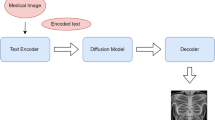Abstract
Currently, plenty of digital image forensic techniques have been proposed and used as diagnostic tools. It is urgent and significant to assess the reliability of such techniques applied in practical scenarios. In this paper, we investigate the security of existing digital image contrast enhancement (CE) forensic algorithms. From the standpoint of attackers, we propose two types of attacks, CE trace hiding attack and CE trace forging attack, which could invalidate the forensic detector and fabricate two types of forensic errors, respectively. The CE trace hiding attack is implemented by integrating local random dithering into the design of pixel value mapping. The CE trace forging attack is proposed by modifying the gray level histogram of a target pixel region to counterfeit peak/gap artifacts. Such trace forging attack is typically applied to create sophisticated composite images which could deceive the prior CE-based composition detectors. Extensive experimental results demonstrate the efficacy of our proposed CE anti-forensic schemes.
Similar content being viewed by others
References
Johnson M K, Farid H. Exposing digital forgeries in complex lighting environments. IEEE Trans Inf Forensics Secur, 2007, 2: 450–461
Mahajan D, Ramamoorthi R, Curless B. A theory of frequency domain invariants: spherical harmonic identities for BRDF/lighting transfer and image consistency. IEEE Trans Patt Anal Mach Intell, 2008, 30: 197–213
Luo W, Huang J, Qiu G. Robust detection of region-duplication forgery in digital image. In: Proceedings of 18th International Conference on Pattern Recognition, Hong Kong, 2006. 746–749
Pan X, Lyu S. Region duplication detection using image feature matching. IEEE Trans Inf Forensics Secur, 2010, 5: 857–867
Popescu A C, Farid H. Exposing digital forgeries by detecting traces of resampling. IEEE Trans Signal Process, 2005, 53: 758–767
Mahdian B, Saic S. Blind authentication using periodic properties of interpolation. IEEE Trans Inf Forensics Secur, 2008, 3: 529–538
Cao G, Zhao Y, Ni R R. Forensic identification of resampling operators: a semi non-intrusive approach. Forensic Sci Int, 2012, 216: 29–36
Lukas J, Fridrich J. Estimation of primary quantization matrix in double compressed JPEG images. In: Proceedings of Digital Forensic Research Workshop, Cleveland, 2003. 5–8
Luo W, Huang J, Qiu G. JPEG error analysis and its applications to digital image forensics. IEEE Trans Inf Forensics Secur, 2010, 5: 480–491
Stamm M C, Liu K J R. Forensic detection of image manipulation using statistical intrinsic fingerprints. IEEE Trans Inf Forensics Secur, 2010, 5: 492–506
Stamm M C, Liu K J R. Blind forensics of contrast enhancement in digital images. In: Proceedings of International Conference on Image Processing, San Diego, 2008. 3112–3115
Stamm M C, Liu K J R. Forensic estimation and reconstruction of a contrast enhancement mapping. In: Proceedings of International Conference on Acoustics, Speech and Signal, Texas, 2010. 1698–1701
Cao G, Zhao Y, Ni R R, et al. Unsharp masking sharpening detection via overshoot artifacts analysis. IEEE Signal Process Lett, 2011, 18: 603–606
Bayram S, Avcibas I, Sankur B, et al. Image manipulation detection. J Electron Imaging, 2006, 15: 041102
Kirchner M, Fridrich J. On detection of median filtering in digital images. In: Proceedings of Electronic Imaging: Security, Steganography, and Watermarking of Multimedia Contents, San Jose, 2010. 10–12
Chuang W-H, Swaminathan A, Wu M. Tampering identification using empirical frequency response. In: Proceedings of International Conference on Acoustics, Speech and Signal Processing, Taipei, 2009. 1517–1520
Gloe T, Kirchner M, Winkler A, et al. Can we trust digital image forensics? In: Proceedings of ACM Multimedia, Augsburg, 2007. 78–86
Kirchner M, Böhme R. Hiding traces of resampling in digital images. IEEE Trans Inf Forensics Secur, 2008, 3: 582–592
Kirchner M, Böhme R. Synthesis of color filter array pattern in digital images. In: Proceedings of Electronic Imaging: Media Forensics and Security, San Jose, 2009. 72540
Stamm M C, Liu K J R. Anti-forensics of digital image compression. IEEE Trans Inf Forensics Secur, 2011, 6: 1050–1065
Cao G, Zhao Y, Ni R R, et al. Anti-forensics of contrast enhancement in digital images. In: Proceedings of the 12th ACM Workshop on Multimedia and Security. New York: ACM, 2010. 25–34
Author information
Authors and Affiliations
Corresponding authors
Rights and permissions
About this article
Cite this article
Cao, G., Zhao, Y., Ni, R. et al. Attacking contrast enhancement forensics in digital images. Sci. China Inf. Sci. 57, 1–13 (2014). https://doi.org/10.1007/s11432-013-4928-0
Received:
Accepted:
Published:
Issue Date:
DOI: https://doi.org/10.1007/s11432-013-4928-0




